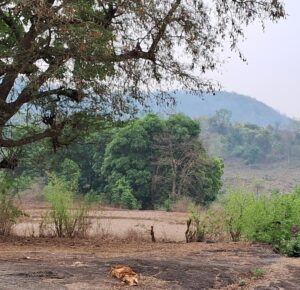Save Nature: Save Biodiversity

News Mania Desk/Saikat Kumar Basu/2nd September 2024
India is one of the world’s 17 megadiverse countries, hosting a wide range of ecosystems, including forests, grasslands, wetlands, and coastal areas. The country is home to about 7-8% of the world’s recorded species, including around 91,000 animal species and 47,000 plant species. However, India’s biodiversity faces numerous threats, including habitat loss and fragmentation due to urbanization, agriculture expansion, and infrastructure development. It is importantvto jote that deforestation, primarily for timber extraction, agriculture, and urbanization, has led to the decline of many forest-dependent species and ecosystems. Pollution, particularly air and water pollution, poses significant threats to biodiversity, affecting both terrestrial and aquatic ecosystems.
Invasive species, introduced through trade and transportation, disrupt native ecosystems and outcompete indigenous species, leading to biodiversity loss. Climate change is exacerbating existing threats to biodiversity by altering ecosystems, disrupting species’ habitats, and affecting their reproductive patterns and migration routes. Overexploitation of natural resources, such as overfishing, illegal wildlife trade, and poaching, threatens numerous species with extinction. Despite these challenges, India has implemented various conservation initiatives, including the establishment of protected areas, wildlife sanctuaries, and national parks to safeguard critical habitats and species. Additionally, community-based conservation efforts, sustainable development practices, and environmental education programs are being promoted to engage local communities in biodiversity conservation and sustainable resource management.
Biodiversity is crucial for the health and resilience of ecosystems. It provides a wide range of ecosystem services, including:
Ecological Stability: Diverse ecosystems are more resilient to disturbances such as disease outbreaks, invasive species, and climate change.
Economic Benefits: Biodiversity supports industries such as agriculture, forestry, and fisheries, providing food, medicine, and raw materials.
Genetic Resources: Biodiversity preserves the genetic diversity of species, which is essential for breeding programs, medical research, and adaptation to changing environmental conditions.
Ecosystem Services: Biodiverse ecosystems provide services like pollination, water purification, flood control, and carbon sequestration, which are vital for human well-being.
Cultural Significance: Biodiversity enriches cultures and societies through spiritual, aesthetic, and recreational values, contributing to our sense of identity and heritage.
Biodiversity is fundamental for the functioning of ecosystems, the economy, human health, and cultural well-being. Protecting and conserving biodiversity is essential for sustainable development and the long-term survival of life on Earth.
Factors responsible for the decline of biodiversity
Several factors contribute to the decline of biodiversity:
Habitat Loss and Fragmentation: The conversion of natural habitats into agricultural land, urban areas, and infrastructure projects destroys ecosystems and fragments remaining habitats, leading to loss of biodiversity.
Pollution: Pollution from sources such as industrial waste, agricultural runoff, and plastic waste contaminates ecosystems, harming both aquatic and terrestrial species.
Climate Change: Rising temperatures, altered precipitation patterns, and extreme weather events disrupt ecosystems and threaten the survival of many species, particularly those with specific habitat requirements.
Overexploitation: Unsustainable harvesting of wildlife for food, medicine, pets, and ornamental purposes, as well as overfishing and illegal logging, deplete populations and drive species to extinction.
Invasive Species: Non-native species introduced to new environments can outcompete native species for resources, prey on them, or introduce diseases, leading to declines in native biodiversity.
Habitat Degradation: Activities such as deforestation, land degradation, and soil erosion degrade habitats, reducing their suitability for native species and contributing to biodiversity loss.
Fragmented Policies and Governance: Inadequate policies, weak enforcement of regulations, and conflicts between conservation and development goals often fail to address the root causes of biodiversity decline effectively.
Addressing these factors requires coordinated efforts at local, national, and international levels to protect and restore habitats, mitigate climate change, regulate pollution, promote sustainable resource management, control invasive species, and strengthen governance frameworks for biodiversity conservation.
Strategies can you use to protect biodiversity?
Protecting biodiversity involves a range of strategies, including:
Conservation of habitats: Preserving natural areas such as forests, wetlands, and coral reefs helps maintain biodiversity.
Sustainable land use: Implementing practices that minimize habitat destruction and fragmentation, such as sustainable agriculture and forestry.
Species protection: Establishing protected areas, enforcing wildlife laws, and impl ementing breeding programs for endangered species.
ementing breeding programs for endangered species.
Combatting invasive species: Controlling the spread of invasive species that threaten native biodiversity.
Sustainable resource management: Managing fisheries, forests, and other resources in a way that balances human needs with biodiversity conservation.
Education and awareness: Increasing public understanding of the importance of biodiversity and encouraging conservation efforts.
International cooperation: Collaborating across borders to address global threats to biodiversity, such as climate change and illegal wildlife trade.

PHOTO CREDIT: Saikat Kumar Basu






